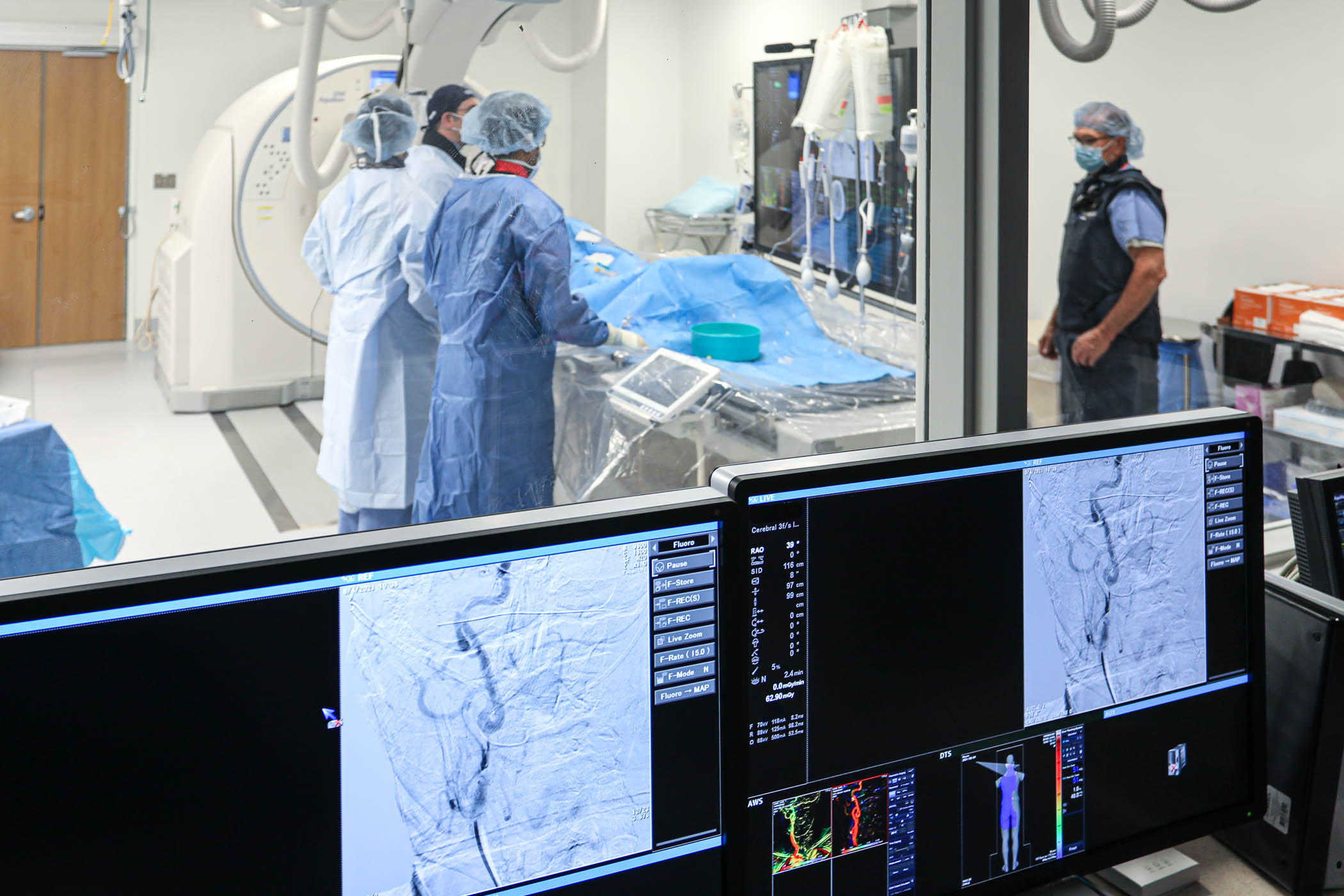NEW HYBRID 4D INTERVENTIONAL IMAGING TECHNOLOGY FOR STROKE PATIENTS IS FASTER, SAFER AND MORE ACCURATE
Kaleida Health facility first in the U.S. to utilize 4D CT system in emergency room exclusively for stroke patients
BUFFALO, N.Y. (August 4, 2021) – Buffalo General Medical Center/Gates Vascular Institute (BGMC/GVI), a Kaleida Health facility, today unveiled the new and much-anticipated Alphenix 4D CT from Canon Medical Systems – a hybrid 4-dimensional angiography and computer tomography (CT) suite that offers faster, safer and more accurate stroke interventions on one revolutionary system. The team at GVI performed a live CT and cerebral angiogram on a 74-year-old male patient as part of the unveiling.
Only the tenth U.S. hospital to offer patients this technology, BGMC/GVI is also the first and only hospital in the U.S. to embed it in the emergency department to more swiftly and accurately detect and treat blood clots in the brains of stroke patients.
The new Alphenix 4D CT seamlessly integrates interventional radiology and CT technology to help health care providers plan, treat and verify strokes in a single clinical setting for better patient care. The new system eliminates the need for patient triage and transfers between departments, proven to positively impact patient outcomes especially for time-sensitive and emergent stroke cases.
This technology uniquely designed and implemented for the treatment of stroke patients was made possible by the Kaleida Health Foundation, including a $2.5 million gift from the John R. Oishei Foundation.
“When it comes to stroke, every second counts. Embedding this technology in the emergency department will allow our teams to more quickly and efficiently treat stroke patients that come through our doors,” said Elad Levy, MD, MBA, FACS, FAHA, co-director of the Gates Stroke Center and Cerebrovascular Surgery at Kaleida Health and chair and professor of Neurosurgery at the Jacobs School of Medicine and Biomedical Sciences. “The Alphenix offers our teams the ability to capture robust diagnostic images in a fraction of a second, analyze cleaner, sharper and more defined images during stent placement or embolization, minimize dosing and cut down on procedure times – all the key elements of stroke treatment happening in one room by one team. I am especially grateful for Kaleida Health’s persistent investments to enhance care for patients here in WNY.”
The Alphenix 4D CT is part of Canon Medical’s suite of collaborative imagine tools which puts integrated imaging intelligence at the center of the patient’s journey. The initiative fuses multiple diagnostic imaging modalities, enhanced workflow efficiencies, and intuitive clinical applications to deliver optimized patient information to health care providers at the point of care.
The multi-disciplinary team of healthcare providers at BGMC/GVI relies on the following key differentiators of the new technology to enhance the treatment of stroke patients in the Western New York region:
- Seamlessly integrates IR and CT technology in a single system for more streamlined workflow and the versatility to switch easily between angiography and CT. With the Alphenix 4D CT, doctors now have the ability diagnose, treat and verify across a wide range of clinical applications, delivering faster, safer and better treatment to our patients.
- Innovative technologies optimized for neurovascular intervention including the world’s first high definition flat panel detector helps clinicians deliver the best possible outcomes for patients
- The system’s unique hi-definition imaging mode allows clinicians to effortlessly zoom up to 1.5” in resolution without losing image quality – providing cleaner, sharper, more defined images during device placement or embolization procedures with enhanced visualization of the surrounding vessels and devices.
- DoseRite technology designed to help clinicians minimize patient X-ray exposure while maintaining optimum image quality.
- Outstanding patient access, enabling clinicians to move the system, not the patient, and utilizing the new tilting cradle table.
“We installed this revolutionary system to offer our patients the most advanced interventional technology,” explained Dr. Adnan Siddiqui, director of neurological stroke services at Kaleida Health and chief executive officer and chief medical officer at the Jacobs Institute. “I’m proud to be part of a team that works tirelessly day in and day out advocating for and improving the lives of our patients. I have no doubt that the way our team is utilizing this technology right here in Western New York will change the way stroke is treated and managed around the world.”
For more information about the Stroke Care Center at Gates Vascular Institute, visit our website here.












